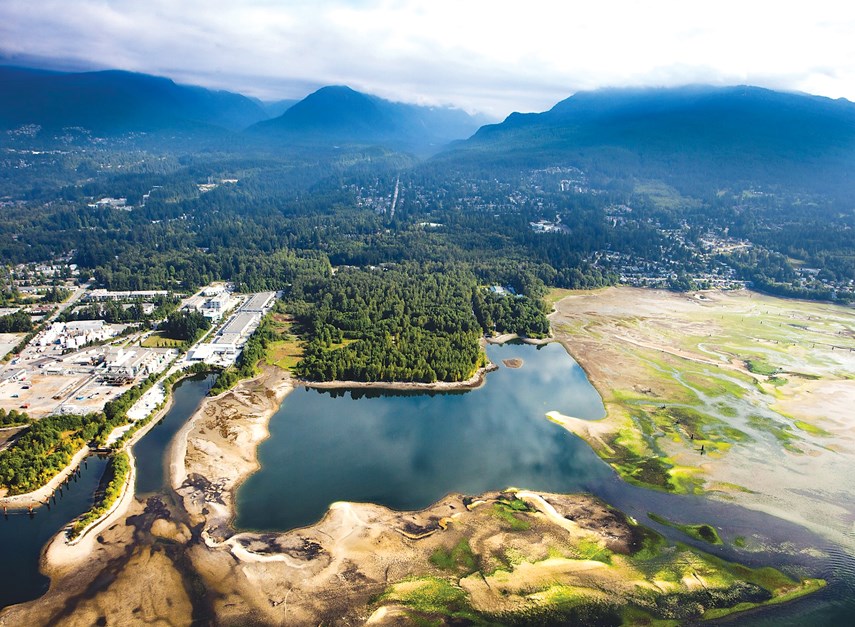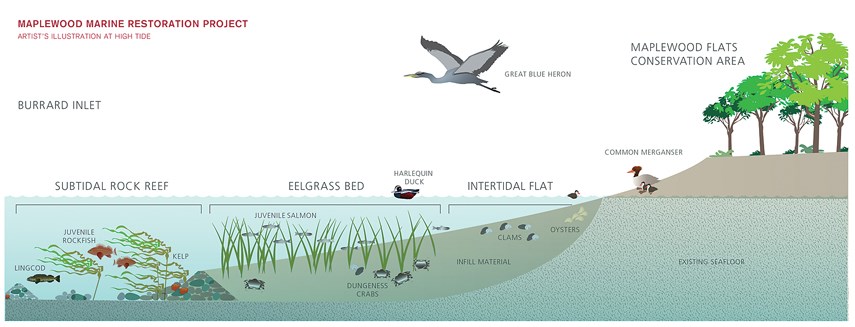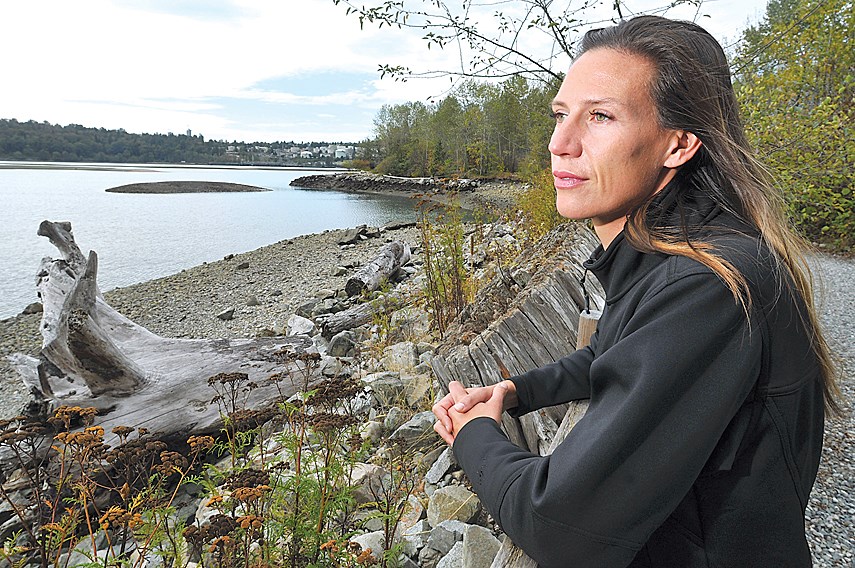The Tsleil-Waututh Nation and Vancouver Fraser Port Authority are planning a major habitat restoration project in the tidal area off Maplewood long contaminated by industry.
Between the 1940s and ’60s, the area was dredged into large basins to facilitate gravel extraction and log storage, making it unfit for most fish and wildlife.
“There’s not a lot of tidal exchange. It’s too deep to support specific vegetation that’s important to juvenile salmon,” said port project manager, Charlotte Olson.
The port now is seeking permits to dredge out a new channel on the southwest corner of the basin to improve flushing and move upwards of 100,000 tonnes of sediment to create “habitat benches” in the northeast basin.
“It really was identified as a restoration priority by the Tsleil-Waututh and we’ve been working quite closely with them on the design and development to date,” Olson said. “There is great opportunity here to enhance the area for fisheries and that’s what we’re really excited about.”
If approved, the result of the project would be 19,000 square metres of new intertidal flats, 16,000 square metres of eelgrass beds and 11,000 square metres of rock reef. “Juvenile salmon, as they out-migrate into Burrard Inlet, they need that marine vegetation for rearing and refuge,” Olson said. “The birds are going to benefit – waterfowl and wading birds that are already in the area. We’ve been working with Wild Bird Trust and using some of their information. They have years of data that they’ve collected.”

The port is paying for the project, which is expected to cost $8 to $10 million, as part of an arrangement to offset the impacts of the proposed expansion of the Centerm container terminal on the south shore. If approved, dredging work would begin in late summer 2019.
The project is actually one of the smaller components of the Tsleil-Waututh’s much larger Burrard Inlet Action Plan, aimed at restoring the inlet they once relied on for food.
“It was historically one of the three largest estuaries in Burrard Inlet and it’s the one that’s most compromised by the rail bridge, the Ironworkers bridge and the industry along the shoreline. So we’re trying to sort out some opportunities to improve its condition,” said John Konovsky, senior advisor to the Tsleil-Waututh. “(It) presents an opportunity to create what may be the largest eelgrass bed in Burrard Inlet.”
The nation still wants to see the 75,000 cubic metres of wood waste that contaminates the mudflats removed, which would allow clams and oysters to return to the area, Konvosky said.

“Pretty much that entire area has got six to 24 inches of wood waste under a few centimetres of sediment,” he said. “It’s what’s going on underneath that’s the problem.”
And the nation is working to replace the old creosote piles on the flats with steel ones to hold bird houses.
“Over the years, you’ve seen McKay Creek has been improved, Lynn Creek has been improved, New Brighton has been improved. Maplewood is the next on the agenda. It’s really creating some islands of good habitat quality that fish can go from one to the next and find a place to rest on their journey up or down the inlet,” Konovsky said.
The port will be doing public consultations about the project this fall, including an open house scheduled for Oct. 2 at the Corrigan Nature House in the Maplewood Conservation Area.



